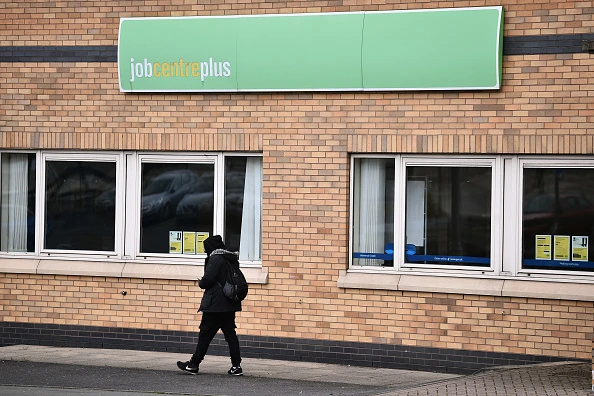
Nationally, the unemployment rate is historically low, but since the start of the pandemic, large numbers of people are leaving the workforce and becoming economically inactive, according to the Centre for Cities’ 2023 Cities Outlook, which calculates the numbers of “hidden” unemployed workers across the country and the regional disparities.

“This report is a really valuable reminder that the pandemic had far-reaching impacts that extended way beyond public health and right into our economy as well,” Dehenna Davison, parliamentary under-secretary of state for levelling up, said at the report’s launch event.
“Our focus today needs to be on doing everything we can to make sure that the hangover from those years doesn’t entrench the inequalities, the divides that already existed between north and south.”
The number is calculated by separating out those who are “voluntarily economically inactive” due to studies, retirement or taking care of family, as opposed to those who are “involuntarily inactive” due to illness or discouragement. The Centre for Cities analysis adds those who are involuntarily inactive to those who are officially unemployed, to calculate a hidden unemployment rate.
Nationally, this triples the number of unemployed people from 1.2 million to 4.7 million – from 3.7% to 12.1%.
Hidden unemployment has a north-south divide
This issue is concentrated in the country’s urban areas, which are home to around 60% of hidden unemployed workers. And while the official unemployment figures don’t show a huge regional disparity, the hidden unemployment rate has a clear north-south divide.
Of the ten cities with the highest hidden unemployment rates, nine are in the north, with Newport the only exception.
“I think there’s a growing consensus around at the moment that devolution is the way to go to bring growth to all of the English regions,” Manchester Mayor Andy Burnham said at the Centre for Cities event. “Levels of inactivity, levels of exit from the labour market… is a big challenge for regional growth, but it will only get bigger and bigger if we do not have control of the levers.”
Blackburn, Middlesbrough and Sunderland top the list, with hidden unemployment rates of 20%. In comparison, Reading, Basildon and Gloucester’s hidden unemployment rates are around 8%.
“There has to be an ability to deal specifically with the issues that present in Stoke, Manchester or Bristol,” Burnham said. “The approach at the moment is fragmented and haphazard, businesses can't work with it. And it doesn't necessarily produce people with the right skills for the real jobs that are out there in our city regions.”
While nationally the hidden unemployment calculation triples the official figure, in parts of the country the growth is much higher. In Mansfield and Birkenhead, the hidden unemployment rate is more than five times the official rate.
In London, Birmingham and Slough the hidden rate creates less of an increase – due to the high volumes of students and retirees, which are designated as voluntary inactivity.
“This week is a year since the government published the Levelling Up white paper and the problem is that almost a year on, very little has actually happened,” said Paul Swinney, Centre for Cities' director of policy and research.
Part of the problem is that, while the government frames the solution to economic inactivity around “getting people back to work”, many cities have a shortage of jobs, and the jobs that are available aren’t good quality or well paid.
This is a historical issue. Centre for Cities’ analysis shows that the cities with the highest involuntary activity rates were also the highest four decades ago, showing the legacy of the large-scale job losses of the 1970s, '80s and '90s.
Local approaches to unemployment needed
A targeted, localised approach to supporting people back into the workforce would be effectively joined up with services in the local area, said Tony Wilson, director of the Institute of Employment Studies, and reach people where they already are. Investment in new jobs, and in reskilling and technical training, needs to focus not just on the number of jobs, but their quality.
The government may tout low unemployment figures as a success, but there needs to be pressure to make sure that work is secure, flexible and fairly paid.
Even concerns about the high numbers of people leaving the workforce due to poor health can be linked back to job quality, says Jennifer Dixon, chief executive of the Health Foundation.
In the cities struggling most from hidden unemployment, health issues are a clear driving factor. In Blackburn and Middlesborough, which have the worst hidden unemployment in the country, over a third of economic activity is due to being temporarily or long-term sick.
In contrast, economic inactivity in Brighton, Norwich and Reading, is far less down to poor health.
Dixon says that there is far more the government could be doing to improve the physical and mental health of people across the country.
But crucially, she says, health should not be seen as disconnected from work, and improving the quality of work across the board could help more disabled or chronically ill people to stay economically active.
“Being unemployed is healthier than having a low-quality job... particularly low skill, low flexibility, low autonomy, high stress, high scrutiny jobs,” Dixon said. “Should you go into a job that you know is going to injure your health because it's just so punitive?”
[Read more: Is this the year UK tech start-ups bounce back?]






